What is AI? A Beginner's Guide (2025)
A clear and practical introduction to AI, explaining the core concepts, popular tools, and the key ethical questions that affect us all.

Artificial Intelligence, or AI, is rapidly moving from science fiction to a part of our daily lives. If you’re new to the topic, the constant stream of news about chatbots, self-driving cars, and super-smart computers can feel overwhelming. This guide is designed to cut through the noise and provide a clear, practical introduction to AI.
We’ll explain what AI really is, show you how powerful tools like ChatGPT actually work, and give you a step-by-step guide to trying them yourself. We’ll also explore the global impact of AI and tackle the important ethical questions, such as bias and job security, that affect us all.
What Is Artificial Intelligence (AI)? A Simple Explanation
At its core, Artificial Intelligence (AI) refers to computer systems that can perform tasks that normally require human intelligence. This includes activities like learning from experience, recognising patterns, understanding language, and making decisions or predictions.
Think of AI not as a single thing, but as a broad field of computer science—an umbrella term covering a range of technologies. These systems work by processing enormous amounts of data, identifying patterns within that data, and then using those learned patterns to achieve a specific goal.
Is AI Just Robots?
The image of a walking, talking, thinking robot is a powerful one, but it’s a common misconception about the state of AI today. The reality is more nuanced and is best understood by splitting AI into two categories:
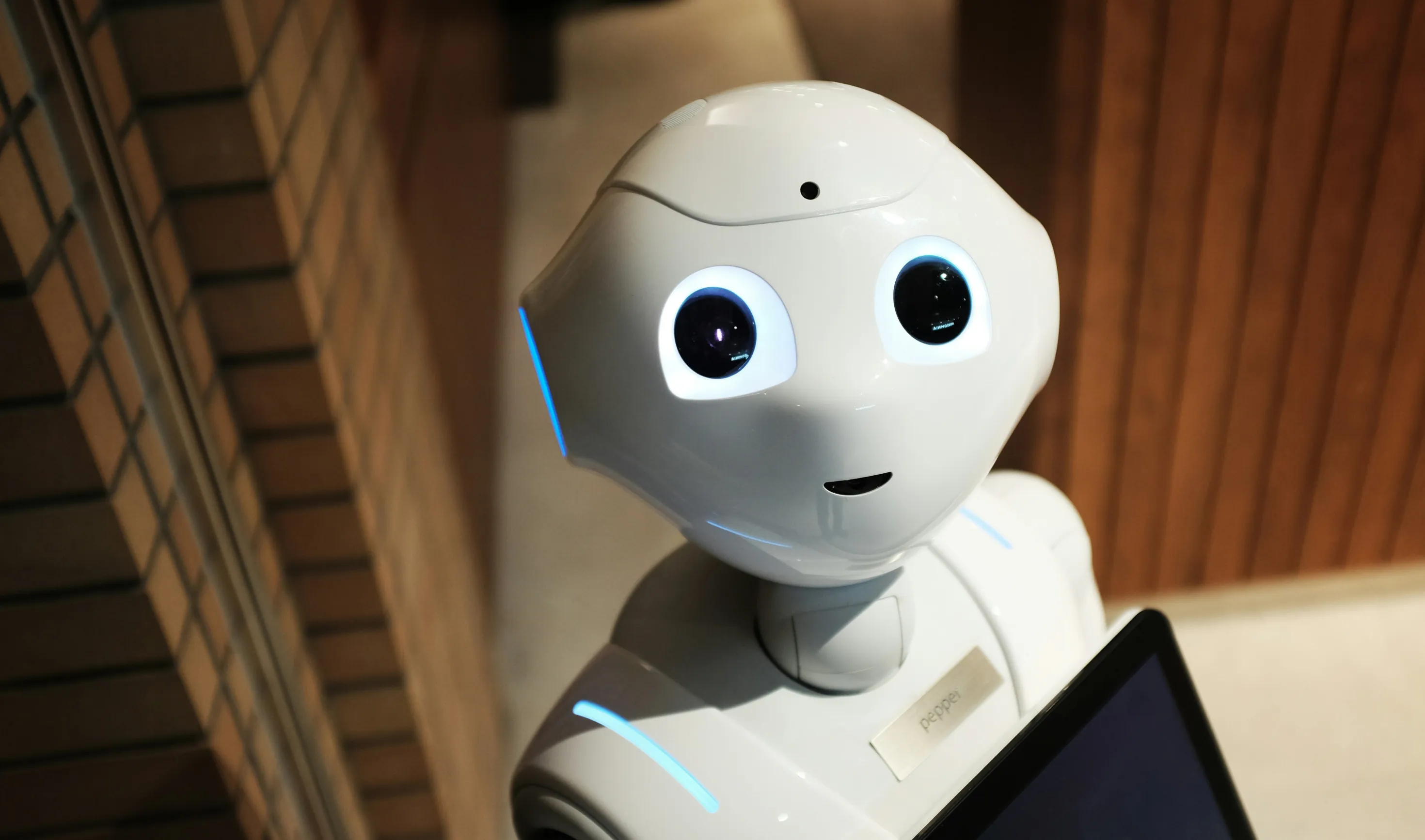
A face of a robot that may have artificial intelligence.
- Artificial Narrow Intelligence (ANI): Also known as Weak AI, this is the only type of AI that currently exists. It’s designed and trained to perform a specific or narrow set of tasks. The AI that recommends films on Netflix, the voice assistant on your phone (like Siri), and the chatbot that answers customer service queries are all examples of Narrow AI. They can be incredibly powerful at their one job, but they can’t operate outside of it.
- Artificial General Intelligence (AGI): Also known as Strong AI, this is the hypothetical, science-fiction version of AI. AGI would possess the ability to understand, learn, and apply its intelligence to solve any problem, much like a human being. Achieving AGI remains a distant and complex challenge for now.
How Does AI Actually Work? The Core Concepts
So, if AI isn’t a conscious brain, how does it “learn”? The process relies on intelligent algorithms and vast datasets. In simple terms, it works like this:
- Data: Developers feed a computer system huge amounts of information (text, images, numbers).
- Training: Algorithms comb through that data to find patterns and relationships.
- Model: The system then builds a “model,” which is essentially a complex mathematical representation of those patterns.
- Prediction: When given a new, unseen piece of information, the model uses what it learned to make a prediction or generate a response.
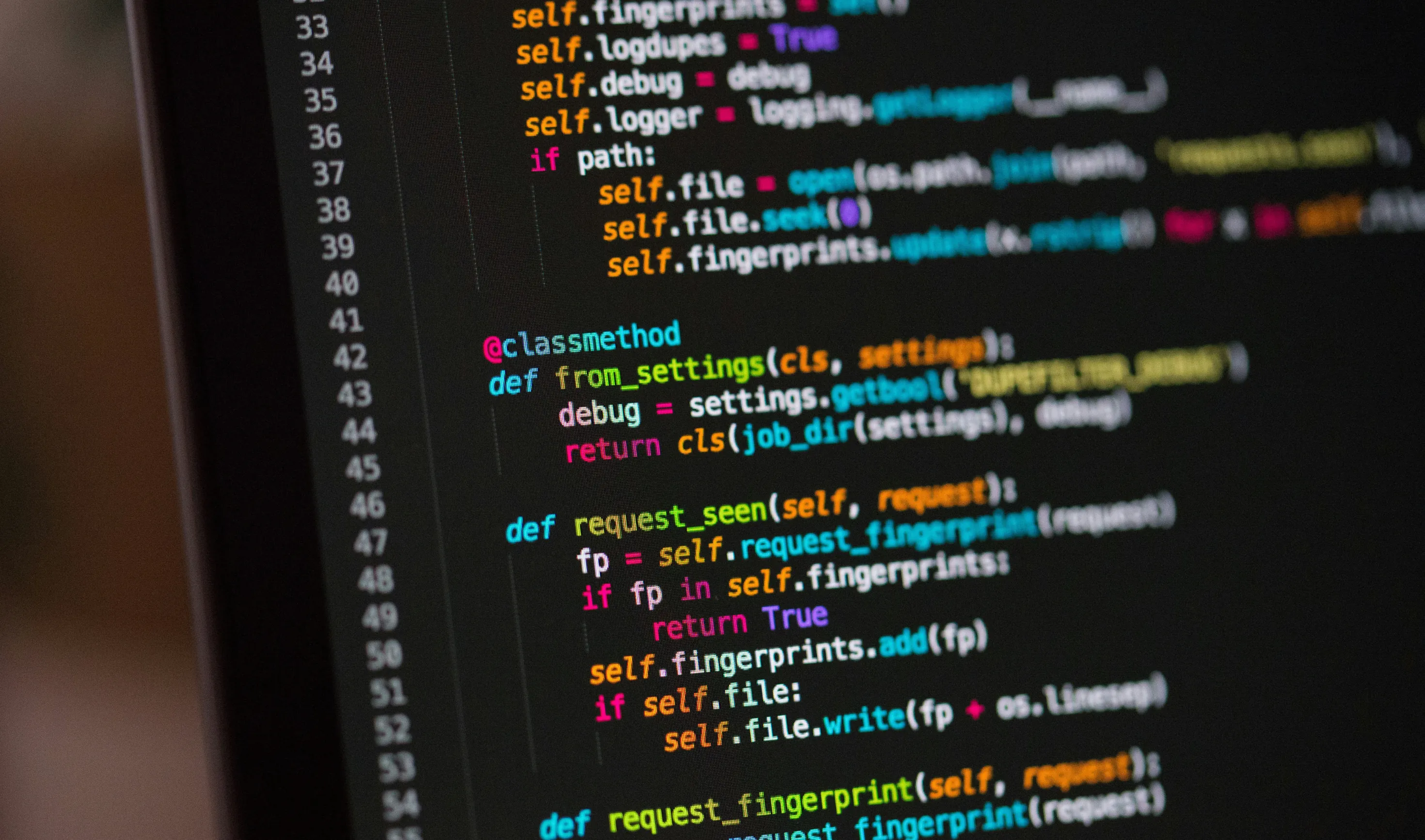
a screen full of code
Within the broad field of AI, you will often hear the terms Machine Learning and Deep Learning. They are not interchangeable; they represent the building blocks of how modern AI works.
-
Machine Learning (ML) is a fundamental subset of AI. It is the science of getting computers to learn and act without being explicitly programmed for every single step. Instead of writing code that says “if you see X, do Y,” developers use algorithms to train a model on a large dataset, and the model “learns” the rules for itself.
-
Deep Learning (DL) is a more advanced and powerful subset of Machine Learning. It uses a structure called an artificial neural network, which is loosely inspired by the connections in the human brain. These networks have many layers that process information, allowing them to learn incredibly complex patterns directly from raw data like text, sound, and images. Deep learning is the technology that powers many of the most impressive recent AI breakthroughs, from self-driving cars to the chatbots we interact with.
What Are Large Language Models (LLMs)?
The recent explosion in AI capabilities that has captured public attention is largely down to one specific type of deep learning technology: the Large Language Model (LLM).
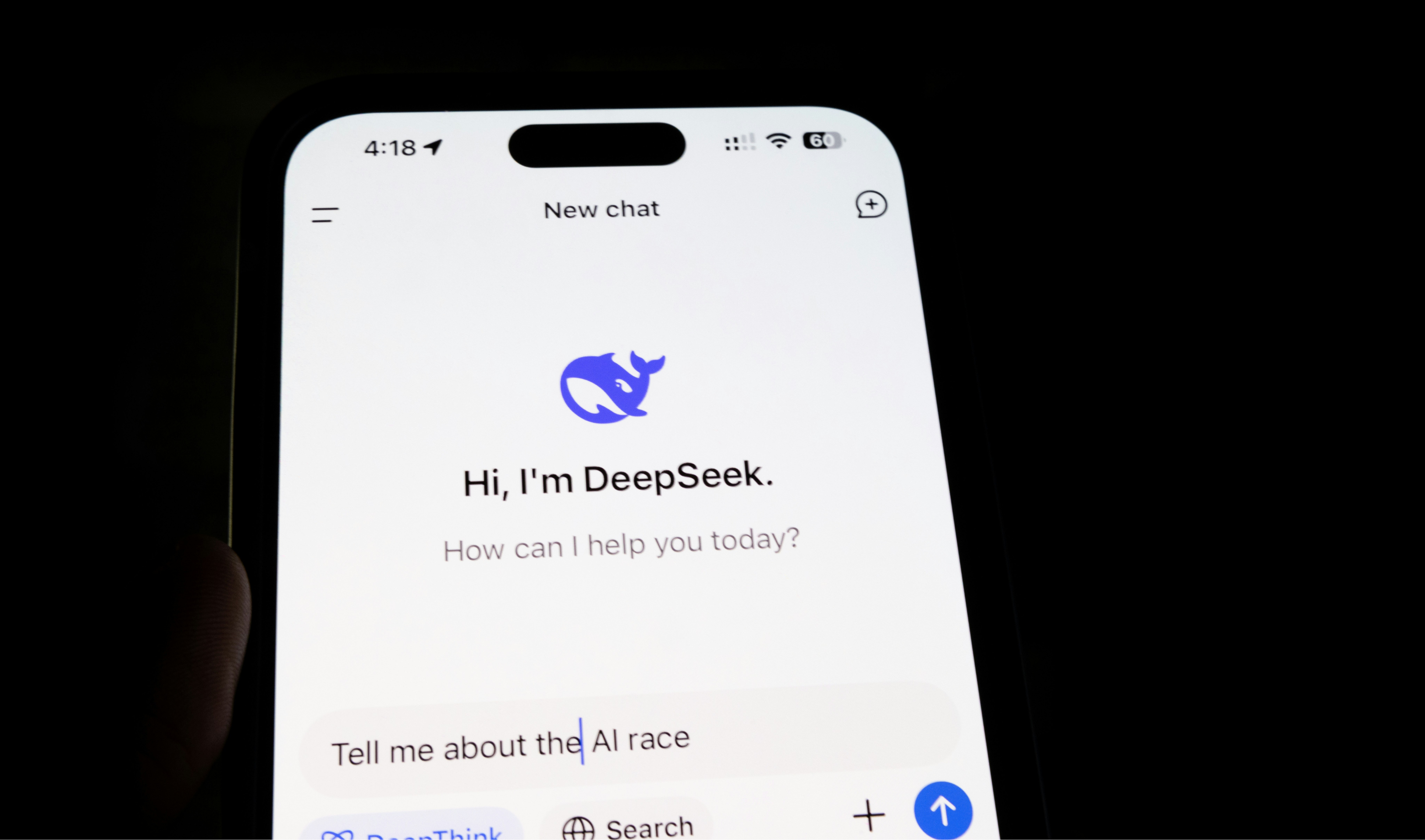
the deepseek ai interface on a mobile device
An LLM is an AI model that has been trained on a colossal amount of text data—billions of articles, books, and websites. This immense training allows the model to learn the patterns, grammar, context, and nuances of human language to an incredibly sophisticated degree.
Its primary function is to process a user’s text input (a “prompt”) and predict the most probable sequence of words to come next. This allows it to generate new, coherent, and contextually relevant text. LLMs are the foundation of Generative AI—a category of AI that creates new content rather than just analysing existing data. When you ask a tool like ChatGPT a question, its LLM is the engine that understands your query and composes a human-like answer from scratch.
How Can I Use AI? Popular Tools for Everyday Use
Theory is one thing, but the best way to understand AI is to use it. Many of the most powerful tools are now accessible to anyone with an internet connection, often with generous free tiers.
Your First Hour with AI: A Step-by-Step Guide to Using ChatGPT
ChatGPT, from the company OpenAI, is one of the most popular and user-friendly AI assistants. Here’s how you can get started in minutes:

chatGPT homepage
- Visit the Website: Open your web browser and go to the official OpenAI ChatGPT website.

chatgpt sign up page
- Sign Up: You will need to create a free account. This usually requires an email address or signing in with a Google or Microsoft account.
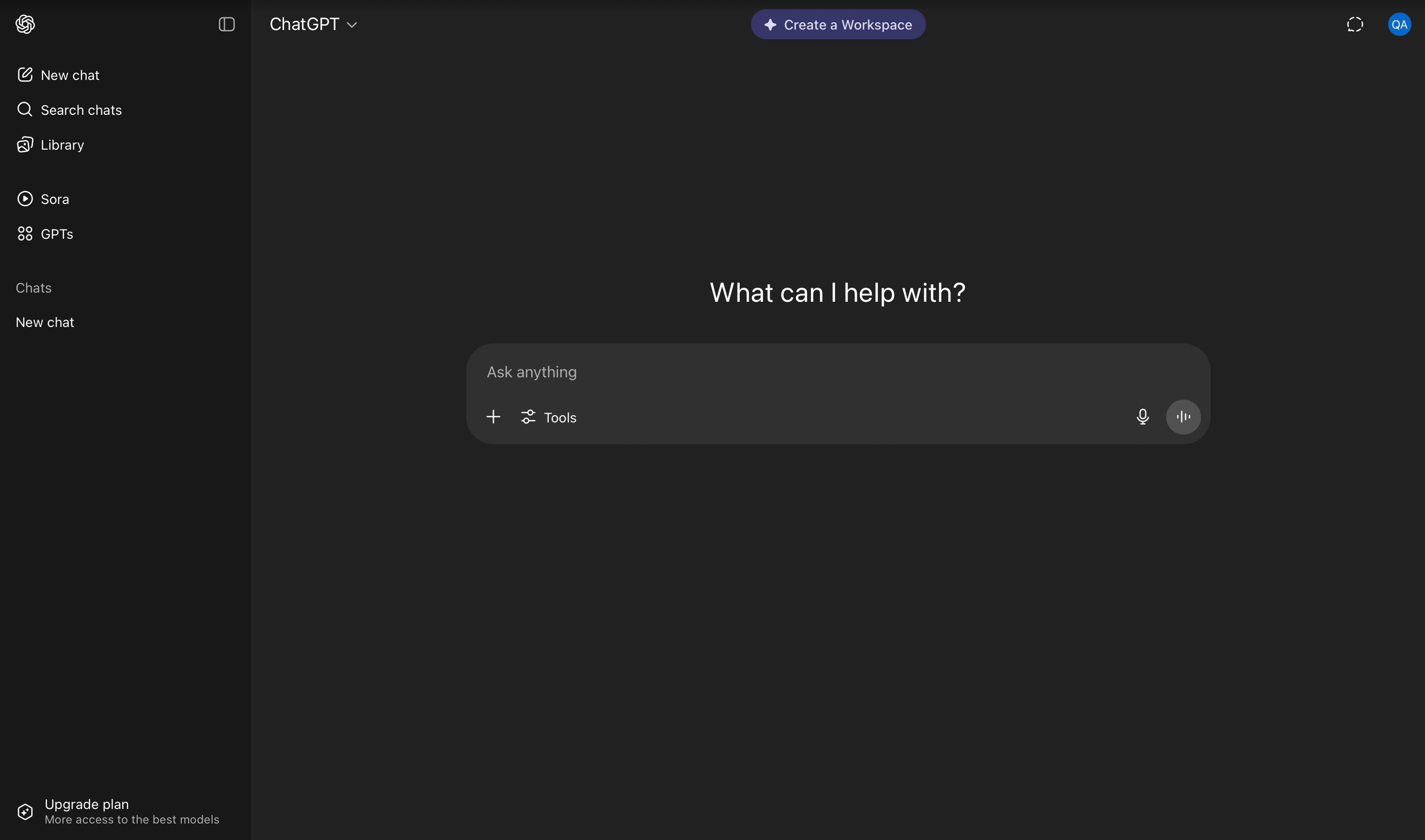
chatgpt interface
- Open the Chat Interface: Once logged in, you will see a simple chat box, much like a messaging app.
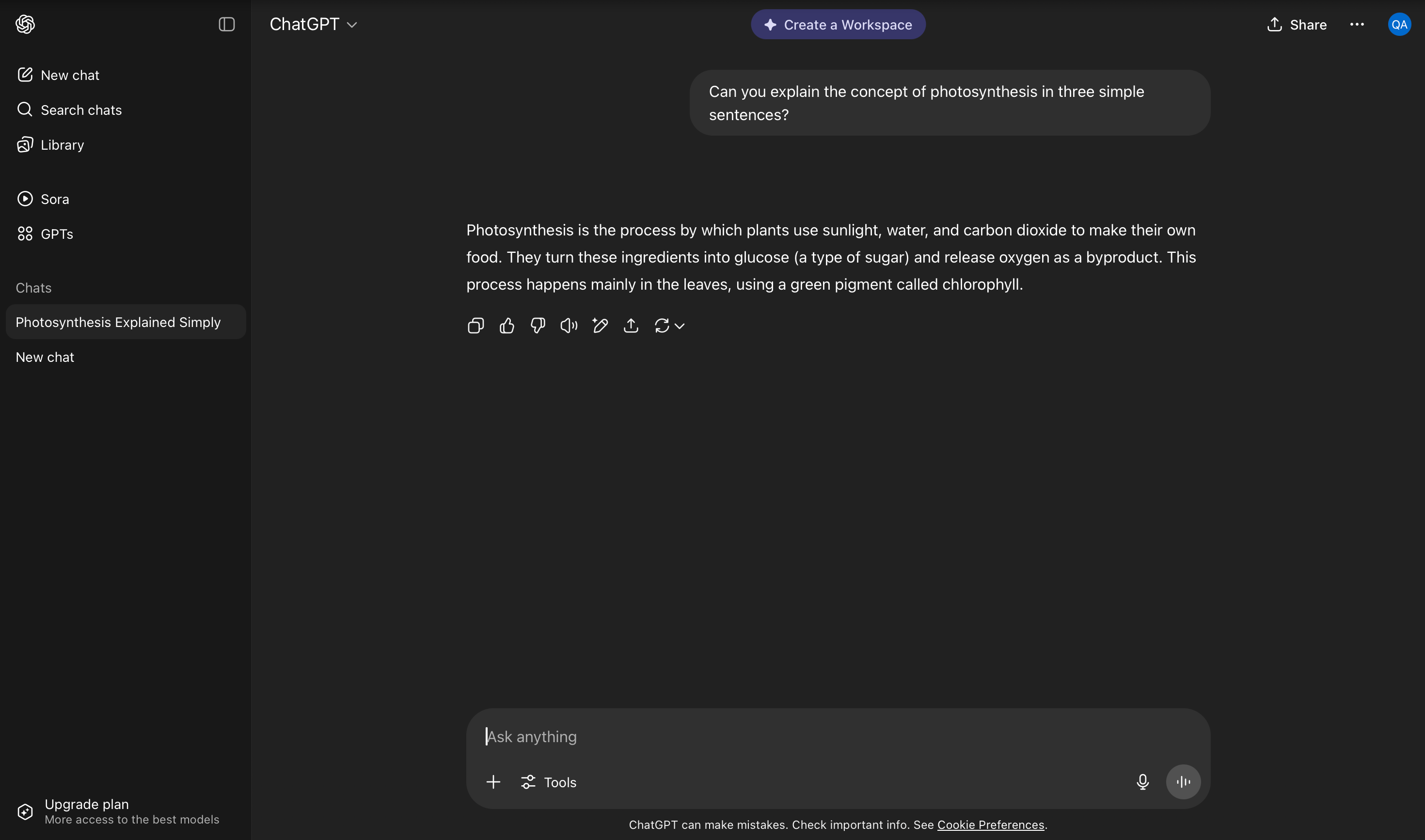
chatgpt interface with a question asked
- Write Your First Prompt: A “prompt” is simply the instruction or question you give the AI. Don’t overthink it. Try something simple:
- “Can you explain the concept of photosynthesis in three simple sentences?”
- “Write a short, polite email to my manager asking for a day off next week.”
- “Give me five ideas for a healthy and quick weekday dinner.”
- Review and Refine: Read the AI’s response. Is it helpful? You can ask follow-up questions to refine the answer, such as “Can you make that dinner idea vegetarian?” or “Make the tone of that email a bit more formal.”
A Quick Look at the Top AI Assistants
While ChatGPT is famous, it’s not the only option. Different models have different strengths. Here are three of the most popular choices.
| Tool | Best For… | Key Feature |
|---|---|---|
| ChatGPT (OpenAI) | All-round assistance, creative tasks, and brainstorming. | Highly flexible and easy to use. The latest versions can also understand images and voice commands. |
| Claude (Anthropic) | Coding, writing clean code, and analysing long documents. | Known for its collaborative communication style and strong performance on complex reasoning tasks. |
| Gemini (Google) | Research, live information, and integration with Google’s services. | Can access up-to-date information from the internet and is deeply integrated into Google’s ecosystem. |
The Global Impact of AI: Facts and Figures
Artificial Intelligence is not just a niche technology; it is a significant and rapidly growing part of the global economy. The global AI market is substantial and growing at an explosive rate. In 2025, the market size is estimated to be around $757 billion, with projections forecasting it to reach approximately $3.68 trillion by 2034.
This rapid expansion is driven by increasing adoption across nearly every industry. In 2024, 78% of organizations reported using AI, a sharp increase from 55% the previous year. This investment is translating into real-world productivity gains, with research showing that AI boosts productivity and can help narrow skill gaps within the workforce. Industries from healthcare and finance to manufacturing and retail are leveraging AI to enhance decision-making, automate processes, and create new services.
Common Misconceptions About AI, Debunked
The rapid rise of AI has been accompanied by a great deal of hype and fear. It is important to separate the reality of the technology from the myths.
Myth 1: AI Will Replace All Human Jobs
This is one of the most common anxieties about AI. While it is true that AI will automate certain tasks, particularly those that are repetitive, it is unlikely to lead to mass unemployment. History shows that disruptive technologies tend to change the nature of work rather than eliminate it. AI is more likely to act as a tool that augments human capabilities, freeing people to focus on tasks that require creativity, critical thinking, and emotional intelligence. The World Economic Forum’s Future of Jobs Report notes that while 85 million jobs may be displaced by 2025, 97 million new roles are projected to emerge in the same time frame.
Myth 2: AI is Unbiased and Always Correct
This is a dangerous misconception. AI systems are not inherently objective. They are trained by humans using data created by humans, and if that data contains historical biases (related to race, gender, or other factors), the AI model will learn and can even amplify those biases. AI-generated outputs can also be factually incorrect, a phenomenon sometimes called “hallucination.” It is crucial to treat AI-generated information with skepticism and always fact-check important information.
Myth 3: AI Can Think, Feel, and is Becoming Conscious
Current AI systems do not think, feel, or possess consciousness in the way humans do. They do not “understand” concepts or have beliefs. What appears to be intelligent conversation is a highly sophisticated form of pattern matching. The AI is calculating the most statistically likely sequence of words to form a response based on the patterns it learned. True, sentient AI remains firmly in the realm of theory.
AI Ethics and the Future: The Important Questions
As AI becomes more integrated into our society, it raises critical ethical questions that we must address to ensure it is developed and used responsibly.
The Challenge of AI Bias
As mentioned, AI bias is a significant risk. A well-known example occurred when an AI recruiting tool used by a major corporation taught itself to be biased against female candidates. Because the model was trained on historical, male-dominated hiring data, it learned to penalize CVs that contained the word “women’s” (e.g., “women’s chess club captain”). This highlights the critical need for diverse datasets and careful auditing of AI systems to ensure fairness.
Privacy in the Age of AI
LLMs require vast amounts of data to be effective. This data often includes personal information scraped from the internet, raising serious privacy concerns. Ensuring that personal data is used ethically, with consent, and in compliance with regulations like GDPR is a major challenge for AI developers.
Who is Responsible When AI Gets it Wrong?
If a self-driving car causes an accident, or an AI medical diagnosis is incorrect, who is at fault? Is it the user, the developer, or the company that deployed the system? Establishing clear lines of accountability for decisions made by AI is a complex legal and ethical problem that society is still working to solve.
Your Key Takeaways and Next Steps
Artificial Intelligence is no longer a far-off concept; it is a present-day reality and one of the most transformative technologies of our time. Here are the key points to remember:
- AI is an umbrella term for technologies where machines perform tasks that typically require human intelligence. The AI we use today is “Narrow AI,” designed for specific jobs.
- It learns from data. AI systems are trained on massive datasets using techniques like Machine Learning and Deep Learning to find patterns and make predictions.
- LLMs power the chatbots. The recent AI boom is driven by Large Language Models (LLMs), which are trained on huge amounts of text to understand and generate human-like language.
- You can use AI today. Powerful tools like ChatGPT, Claude, and Gemini are readily available, often for free, to help with writing, research, and creative tasks.
- Think critically. AI is a powerful tool, but it’s not perfect. It can be factually incorrect and can reflect human biases from its training data. Always verify important information.
- Ethics matter. As AI becomes more integrated into society, addressing challenges like bias, privacy, and accountability is crucial for its responsible development.
Understanding AI goes beyond just the definitions; it involves engaging with the technology directly. With powerful tools now freely accessible, anyone can experience first-hand how AI can be a practical assistant for work, learning, and creativity. By understanding both the capabilities and limitations of AI, we can all participate in the conversation about how to shape a future where this powerful technology benefits everyone. The journey starts with a single question, and the best time to start is now.
Frequently Asked Questions
What is the simplest definition of Artificial Intelligence?
Artificial Intelligence (AI) is a field of computer science focused on creating machines that can perform tasks that would normally require human intelligence. This includes things like learning from experience, understanding language, recognising objects in images, and solving problems.
Can I use powerful AI tools like ChatGPT for free?
Yes. Many of the most popular and powerful AI tools, including ChatGPT, Google Gemini, and Claude, offer free versions that are highly capable. These free tiers are excellent for everyday tasks like writing emails, summarising text, brainstorming ideas, and answering questions. They may have usage limits or lack some of the advanced features of the paid plans, but they are a perfect starting point for any beginner.
What is the difference between AI and Machine Learning?
Machine Learning (ML) is a subset of Artificial Intelligence. AI is the broad concept of creating intelligent machines, while ML is a specific method for achieving AI. With machine learning, a system is trained on large amounts of data to learn patterns for itself, rather than having every rule programmed by a human. Think of AI as the goal, and machine learning as one of the primary ways to get there.
Is AI going to take my job?
This is a common concern, but the reality is complex. AI is expected to change many jobs rather than simply eliminate them. It will likely automate repetitive tasks, allowing people to focus on more creative and strategic work. The World Economic Forum predicts that while AI may displace 85 million jobs globally by 2025, it is also expected to create 97 million new roles, resulting in a net increase.
Is the information I get from an AI always accurate and unbiased?
No, and it is crucial to remember this. AI models can make factual errors, sometimes called “hallucinations.” Furthermore, because they are trained on vast amounts of data from the internet, which was created by humans, they can reflect and even amplify existing societal biases. You should always apply critical thinking to AI outputs and independently verify any important facts or figures.